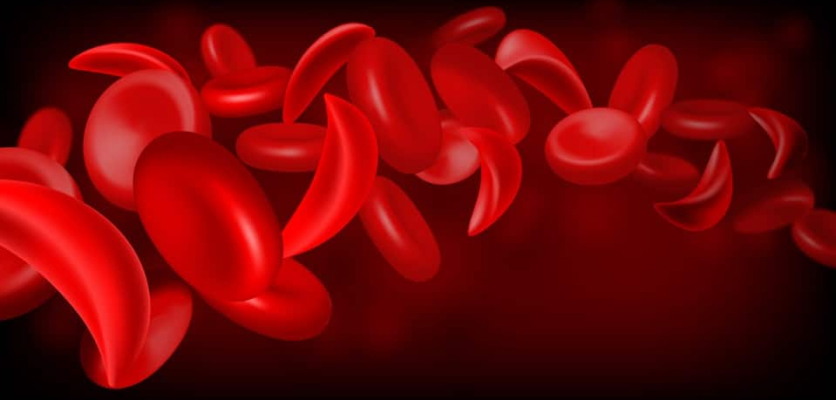Sickle Cell Anemia Treatments and Tips
Sickle cell anemia, often called sickle cell disease (SCD), is an inherited blood disorder. Up to 100,000 Americans have sickle cell anemia. Despite its prevalence, there are often misconceptions about it. In this article, our expert hematologist highlights key facts and provides important information about sickle cell anemia treatment options.
What is sickle cell anemia?
Normal red blood cells have a round shape and move freely within your blood vessels. The average person has enough healthy red blood cells to transport oxygen throughout the body. With sickle cell anemia, the patient’s red blood cells are sickle-shaped instead of round, appearing like the letter C backward.
In addition, the sickle cells become rigid and get stuck in smaller blood vessels. As a result, blood flow is blocked, and oxygen does not reach parts of your body as needed. This, in turn, creates problems for your vascular – or blood flow – system.
How is it different from other types of anemia?
Anemia is a blood disorder that results in the body not making enough red blood cells. There are over 400 different types of this condition. While some forms of anemia can be caused by medication and other health conditions, sickle cell anemia is a hereditary disorder that affects red blood cells differently.
Causes of sickle cell anemia
As a hereditary condition, a gene mutation causes sickle cell anemia. More specifically, the gene that directs the production of hemoglobin in the body is mutated. Hemoglobin makes blood appear red and transports oxygen from the lungs to the rest of the body.
For a child to be born with this blood disorder, both the mother and father must pass on the hemoglobin gene mutation. If only one parent carries the sickle cell gene, a child can inherit the sickle cell trait – meaning the child can have both sickle cells and healthy blood cells. Though it’s uncommon to have symptoms with sickle cell trait, the gene could be passed to your children.
Statistically, sickle cell anemia does appear to affect some ethnicities more than others. According to the American Society of Hematology, 8% of African Americans inherit the sickle cell trait. The U.S. Centers for Disease Control and Prevention also reports that of those in the United States with sickle cell disease, “90% are non-Hispanic Black or African American.”
Signs and symptoms of sickle cell anemia
Symptoms and severity can vary depending on the disease type. The symptoms can also change over time. They include:
- Pain episodes: These are often referred to as a sickle cell crisis and are one of the main symptoms of the condition. The intensity of the pain can vary and may last a few hours to a few weeks.
- Swelling of the hands and feet
- Infections
- Vision problems: Vision problems can be caused by sickle cells that can damage the retina.
- Delayed growth: A lack of healthy red blood cells can cause stunted growth in infants and delayed puberty in teenagers.
An increased risk of stroke due to impaired blood and oxygen flow is also associated with the disease.
TREATING ANEMIA WITH INFUSIONS
How to diagnose sickle cell anemia
Sickle cell disease is diagnosed through a blood test. In the U.S., all newborns are screened for sickle cell. In this test, a blood sample is screened for hemoglobin S, the gene mutation that causes sickle cell anemia.
Depending on the results of the blood test, the patient may be sent for further tests. Your doctor will need to determine whether you’ve inherited gene mutations from one or both parents.
Tests can also determine the likelihood of passing the blood disorder along to your children. In many cases, the patient will also be referred for genetic counseling.
Sickle cell anemia treatments
Treatment for sickle cell disease often focuses on relieving the symptoms associated with the disorder. Usually, treatment involves medications for relieving pain and treating infections. Blood transfusions and clinical trials may also be part of your treatment plan.
For those 16 years or younger, bone marrow transplants are sometimes performed to cure sickle cell anemia. The procedure can have significant risks, and finding a donor match can be difficult.
Some sickle cell anemia treatments include:
- Hydroxyurea: Taken in a daily dose, helping to reduce pain and reduce the need for blood transfusions
- L-glutamine oral powder: Reduces pain and the frequency of pain cycles
- Crizanlizumab: A powerful pain reliever given through intravenous methods
- Blood transfusions: Performed intravenously to supply patients with additional red blood cells to help reduce symptoms and complications
No matter the treatment, sticking to a medication regime can help improve symptoms and quality of life.
Living with sickle cell anemia
Though living with this disease presents challenges, engaging in daily activities and enjoying a normal life is possible. On top of seeking regular care from a knowledgeable hematologist, lifestyle can impact day-to-day functions. To help manage sickle cell anemia, adopt these healthy lifestyle habits:
- Eat healthy foods
- Take folic acid supplements
- Drink plenty of water
- Avoid temperature extremes
- Avoid smoking
- Exercise regularly
- Limit and manage stress
You may also find that support groups or therapy can be beneficial for people with sickle cell anemia.
Treating sickle cell anemia and other blood disorders
Sickle cell anemia is often misunderstood by those with the disorder or those afraid of passing along sickle cell traits to their children. A qualified hematologist, a doctor specializing in blood disorders, can answer your questions and offer the best sickle cell anemia treatment options for your medical condition.
Personalized Hematology-Oncology provides comprehensive hematology and oncology consultation for all blood disorders, including sickle cell disease. Contact us to learn more about our expertise in hematology.







